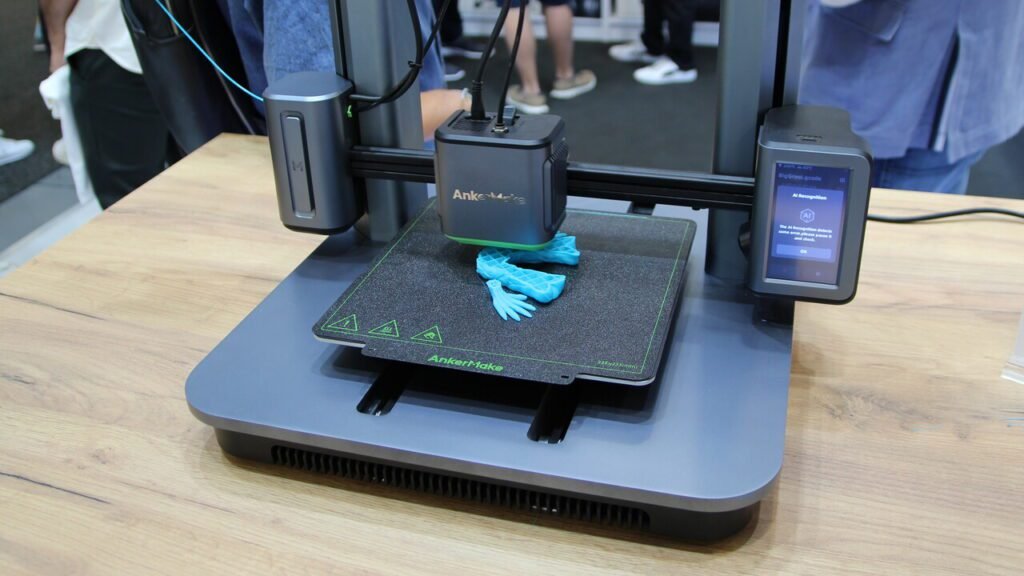How the Mimaki 3D Printer is Revolutionizing Printing

The printing industry has witnessed innovation from printing to advancements in inkjet technology, constantly pushing the boundaries of what is achievable. A groundbreaking addition to this field is the Mimaki 3D printer, which is revolutionizing how we perceive printing.
What is the Mimaki 3D printer?
The Mimaki 3D printer is a device that enables users to generate three objects based on digital files. It differs from printing methods that involve transferring ink onto a surface as it constructs objects layer by layer using manufacturing techniques.
How does it operate?
How does the Mimaki 3D printer function? Creating a file usually designed with CAD (Computer Aided Design) software involves the following process. Users upload a file to the printer, which utilizes this information to construct the object step by step. The printer deposits a material layer—such as plastic or metal—onto a build platform. It then employs a precision nozzle to apply layers on top of each other. Repeat this process until you finish the task of printing the object.
What Makes it Stand Out?
The Mimaki 3D printer distinguishes itself from printers for reasons. Firstly, its speed and precision are unmatched. The printer can produce objects with exceptional accuracy, which is particularly valuable in automotive, aerospace, and healthcare industries where precision is crucial.
Secondly, the printer offers a range of materials to work with. It can handle plastics, metals, ceramics, and edible materials like chocolate. This versatility allows users to create objects with properties and characteristics.
Moreover, the Mimaki 3D printer features a user interface that makes it accessible to experts and beginners. Its intuitive software simplifies the design and printing process, ensuring that even those with skills can fully utilize its potential.
Applications of the Mimaki 3D Printer
The applications of the Mimaki 3D printer are virtually limitless. Let’s explore a few industries that can benefit from this groundbreaking technology:
Manufacturing: The ability to quickly and accurately create customized parts and prototypes has revolutionized the manufacturing industry—the Mimaki 3D printer benefits companies, including lead times, cost reduction, and improved overall efficiency.
Healthcare: In the healthcare industry, 3D printing has already gained popularity for producing implants, prosthetics, and surgical models. With the Mimaki 3D printer, this technology takes a step forward by enabling the creation of models and intricate surgical guides.
Education: The field of education greatly benefits from 3D printing as it allows students to bring their ideas to life, fostering creativity and innovation. The limitless learning opportunities provided by the Mimaki 3D printer are genuinely remarkable.
Architecture: Architects can leverage the capabilities of the Mimaki 3D printer to fabricate scale models of their designs, enhancing the visualization of the product and facilitating better communication with clients.
Fashion: The fashion and design industries are always at the forefront of pushing boundaries and creating pieces. With the Mimaki 3D printer, designers can transform their imaginative concepts into reality through intricate and avant-garde creations.
The Future Outlook for Printing
The emergence of the Mimaki 3D printer represents a glimpse into what we can expect in terms of advancements in printing technology. As we witness progress, we anticipate more groundbreaking innovations in this field. The advances in bioprinting, which enable the creation of organs and the development of eco materials, offer endless possibilities.
Conclusion
The Mimaki 3D printer is revolutionizing the printing industry by offering speed, precision, versatility, and a user-friendly interface. Its applications are diverse in manufacturing, healthcare, and education sectors. Looking ahead to the future, it is evident that 3D printing will continue to shape and revolutionize our object creation and manufacturing methods.
Alexia is the author at Research Snipers covering all technology news including Google, Apple, Android, Xiaomi, Huawei, Samsung News, and More.












